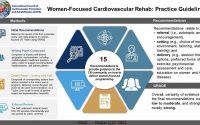New AMA policies takes aim at drug shortages and poor EHR training for medical students
The American Medical Association is taking aim at dangerous drug shortages and the need for better EHR education for physicians with two new policies that could change manufacturer infrastructure and medical education.
First, a newly adopted policy has declared drug shortages an urgent public health crisis, as many of the drugs currently in dangerously short supply are everyday commodities needed for patient care in all medical settings such as sterile intravenous products containing saline or other fluids.
Shortages of these basic products and their containers significantly ramped up following the devastation wrought by Hurricane Maria in Puerto Rico, where most of the bags used in the U.S. are made.
The AMA said it would push the Department of Health and Human Services and the Department of Homeland Security to treat drug shortages as a national security initiative resulting in the designation of drug manufacturing sites as”critical infrastructure with vital importance to the nation’s public health.
However, that effort must be a shared one with both government and industry. One hurdle the AMA effort faces is manufacturer reluctance to share production locations for drugs and other medical products, despite the fact that any information shared with Health and Human Services and Homeland Security would be protected by law from public disclosure and used only in the context of preparedness planning and response.
“To facilitate industry and government collaboration in preparing for disasters and determining contingency plans to mitigate drug shortages, the AMA calls for greater manufacturer transparency regarding production location and problems that may lead to a drug shortage. Given the uncertainty regarding these sites as alternative sources for drugs in short supply, the AMA also calls for more information on the quality of outsourcing compounding facilities,” the organization said in a statement.
Second, it’s no secret that electronic health records systems have become an integral part of physician functions in most provider settings, and that under MACRA and value-based reimbursement, they are becoming even more crucial in documenting the quality of care delivered as well as other reportable measures that will influence physician reimbursement. However, the AMA said it is becoming clear that medical students and residents are suffering from a lack of training in medical school and residency programs when it comes to the often-lamented systems. The AMA adopted a new policy at its annual meeting that it hopes will ensure medical students get quality clinical documentation experience using EHRs.
“There is a clear need for medical students to have access to – and learn how to properly use – EHRs well before they enter practice. That’s why, even as we continue to work to improve EHR usability for all physicians and physicians-in-training, we’ve been working over the last five years with medical schools across the country to ensure our future physicians are better equipped to provide care in a practice environment of rapid progress, new technology, and changing expectations both from government and society—directly impacting the way healthcare is delivered nationwide,” said AMA Board Member and medical student Karthik V. Sarma.
According to the AMA’s new policy report, there are concerns about the effects of the EHR on relationships with patients, as students and residents might be more engaged with the chart and computer than with the patient. There is also concern about students and potentially poor role modeling from faculty and care teams on proper use and best practices for EHRs.
“The AMA’s new policy encourages medical schools and residency programs to design clinical documentation and EHR training that provides evaluative feedback regarding the value and effectiveness of the training, and that can be evaluated and demonstrated as useful in clinical practice,” the AMA said.
The policy also pushes medical schools and residency programs to provide faculty with additional EHR professional development resources to make sure they are setting the appropriate example of EHR use during physician/patient interactions.
Twitter: @BethJSanborn
Email the writer: [email protected]
Source: Read Full Article


